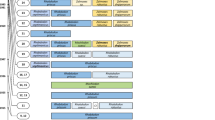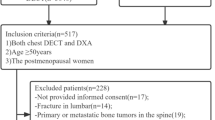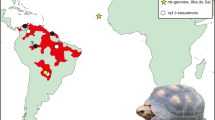Abstract
IN reply to Prof. Newton's letter, under the above title, in NATURE of last week (p. 101), in which he refers to the description by me of the Chatham Island Ralline bones under a distinct genus Diaphorapteryx, and observes “that one thing seems needed to make the discussion [on the probability of a land connection between the Chatham and Mascarene Islands] real, and that is the proof of the assertion that Aphanapteryx ever inhabited the Chatham Islands,” I beg to say that in his letter there is a slight confusion of dates, which affects the question of the nomenclature. On July 29 last year I visited Cambridge for the purpose of comparing the bones from the Chatham Islands I had brought with me with the real Aphanapteryx remains in the Museum there. It turned out that Dr. Gadow, who was abroad, had laid them aside where Prof. Newton could not place his hand upon them, and I was, therefore, unable to see them. A week or two later, when in Edinburgh at the British Association Meeting, in a note intimating the return of Dr. Gadow, and kindly arranging for my examination of the bones, Prof. Newton adds, “I believe you will want a new generic name for what you have called Aphanapteryx” and suggests the name Diaphorapteryx instead. I was unavoidably long prevented from revisiting the Cambridge Museum, and so in describing as Diaphorapteryx the Chatham Island bones, at a meeting of the British Ornithologists' Club in December, 1892, I accepted the suggestion of Prof. Newton, who alone had till then seen the remains from both localities. On February 23, prior to reading my paper at the Royal Geographical Society, I again visited Cambridge, and in the most kind manner received every facility and assistance both from the Professor and from Dr. Gadow in comparing the specimens. On this occasion I was unable to recognise any sufficient characters, by which, in my estimation, to separate generically the bones from the Chatham Islands from those from Mauritius. This decision I stated at the meeting of the R.G.S. on March 13 last, and more recently in a communication to the Brit. Ornith. Club, which will appear in its forthcoming Bulletin. If I mistake not, however, Prof. Newton agreed with me that the Chatham Island form was nearer to Aphanapteryx than the latter was to Erythromachus of Rodriguez. Some of these remains from Mauritius have been figured by Prof. Milne-Edwards in his “Oiseaux Fossiles de France,” and the remainder are fully discussed and illustrated by Dr. Gadow in a shortly-to-be-issued fasciculus of the Trans.Z.S. of London, while those from the Chatham Islands will appear shortly, I hope, in one or other of the scientific journals or Proceedings. After a careful study of all the material I have no hesitation, however, in stating meantime—as those who care will then have an opportunity of judging—that the bones from both regions are generically the same. I maintain also, that even if some osteologists should be disposed (from the somewhat larger size of the Chatham Island bones, though among them I found a number scarcely to be separated on even that ground) to make a generic distinction between them, the question would not only not fall, but I really cannot see that the argument based on their discovery in the New Zealand region would be in the least invalidated, as the forms are unquestionably so very nearly related. The importance of the distribution of the blue Water-hens, and the relationship between the Huias of New Zealand and the Frigelupus of Reunion—long ago pointed out by Mr. Wallace—and many other facts as far as birds are concerned recently urged by Dr. Sharpe at the Royal Institution, appears now to a fuller extent by the discovery of those unexpected forms in the Chatham Islands.
This is a preview of subscription content, access via your institution
Access options
Subscribe to this journal
Receive 51 print issues and online access
$199.00 per year
only $3.90 per issue
Buy this article
- Purchase on SpringerLink
- Instant access to full article PDF
Prices may be subject to local taxes which are calculated during checkout
Similar content being viewed by others
Author information
Authors and Affiliations
Rights and permissions
About this article
Cite this article
FORBES, H. Mr. H. O. Forbes's Discoveries in the Chatham Islands. Nature 48, 126 (1893). https://doi.org/10.1038/048126a0
Issue date:
DOI: https://doi.org/10.1038/048126a0



